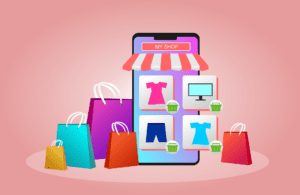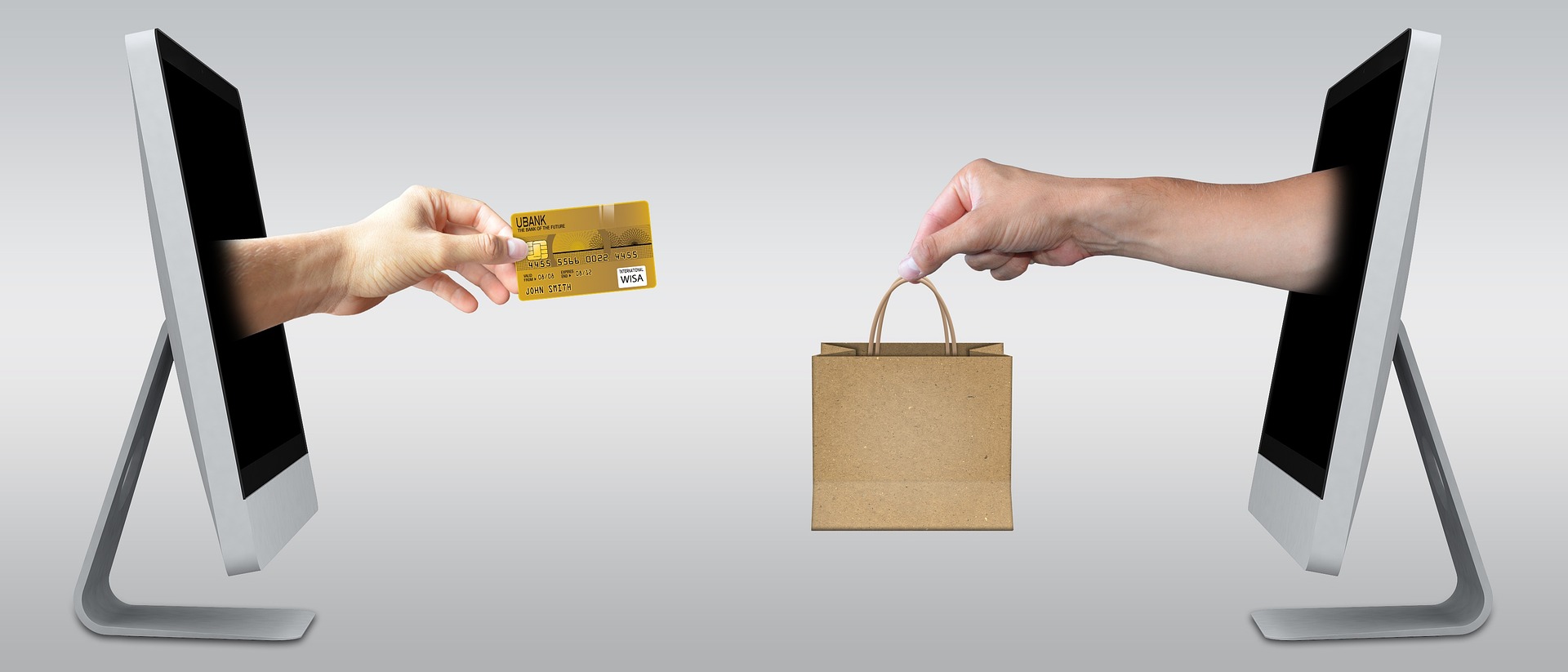What do you mean by ecommerce? | What basically is E-commerce
E-commerce, or electronic commerce, refers to the buying and selling of goods or services over the internet. E-commerce businesses typically operate through online platforms that allow customers to browse and purchase products or services using a web browser or a mobile app. Some common examples of e-commerce platforms include Amazon, Flipkart and Myntra. E-commerce transactions can be conducted using various payment methods, such as credit cards, debit cards, or digital payment systems like UPI.
E-commerce has become a popular way for businesses to reach customers and for consumers to shop for goods and services from the convenience of their own devices.
What are the types of ecommerce ?
- Business-to-consumer (B2C) e-commerce: This type of e-commerce involves companies selling products or services directly to individual consumers. Examples of B2C e-commerce in India include Flipkart, Amazon, and Myntra.
- Business-to-business (B2B) e-commerce: This type of e-commerce involves companies selling products or services to other businesses. Examples of B2B e-commerce in India include IndiaMart, Alibaba, and TradeIndia.
- Consumer-to-consumer (C2C) e-commerce: This type of e-commerce involves individuals selling products or services to other individuals, usually through online marketplaces. Examples of C2C e-commerce in India include OLX and Quikr.
- Consumer-to-business (C2B) e-commerce: This type of e-commerce involves individuals selling products or services to businesses. An example of C2B e-commerce in India is freelance work platforms like Upwork and Fiverr.
- Business-to-administration (B2A) e-commerce: This type of e-commerce involves businesses interacting with government agencies or other public organizations to conduct transactions such as paying taxes or applying for permits. An example of B2A e-commerce in India is the e-filing of tax returns through the Income Tax Department’s website.
- Consumer-to-administration (C2A) e-commerce: This type of e-commerce involves individuals interacting with government agencies or other public organizations to conduct transactions such as paying fines or requesting government services. An example of C2A e-commerce in India is the online booking of appointments with government hospitals or the submission of online visa applications.
- Mobile commerce (m-commerce): This type of e-commerce involves the buying and selling of goods or services through mobile devices such as smartphones or tablets. Examples : Amazon, Flipkart.
- Social media commerce (s-commerce): This type of e-commerce involves the use of social media platforms to facilitate the buying and selling of goods or services. Examples : Facebook Marketplace, Instagram Shopping, Pinterest Shopping.
- Subscription-based e-commerce: This type of e-commerce involves a business offering a subscription service that provides customers with access to products or services on a recurring basis. Examples : Hotstar, Amazon prime, Netflix, Zee5, Spotify.
- Crowdfunding e-commerce: This type of e-commerce involves the use of crowdfunding platforms to raise money for the development and launch of new products or services. Examples are FuelAdream, Ketto, Wishberry, Impactguru, Bitgiving.
What are the benefits of e-commerce?

- Convenience: E-commerce allows customers to shop from anywhere at any time, without the need to physically visit a store. This is particularly useful for people with busy schedules or those who live in rural or remote areas.
- Wider product selection: E-commerce platforms often offer a wider selection of products than physical stores, as they are not limited by space constraints.
- Competitive pricing: E-commerce businesses often offer competitive pricing due to lower overhead costs compared to physical stores.
- Personalization: E-commerce platforms can use data from customer purchases and browsing history to make personalized recommendations and offer personalized promotions.
- Easy to use: E-commerce platforms are typically easy to use, with clear product descriptions and user-friendly interfaces.
- Easy to scale: E-commerce businesses can easily expand their reach and customer base by adding new products and marketing to a wider audience through the internet.
- Access to global markets: E-commerce businesses can reach customers around the world, expanding their market beyond the local area.
- Improved customer service: E-commerce platforms often have customer service features such as live chat, email support, and FAQ sections to help customers with their queries and issues.
How to make money with E-commerce ?
- Sell products online: One of the most common ways to make money with e-commerce in India is by selling products online through an e-commerce platform like Amazon, Flipkart, or Myntra. You can sell your own products or act as a reseller for other brands.
- Dropshipping: Dropshipping involves selling products from a supplier or manufacturer and having them ship the products directly to the customer. You can set up a dropshipping business by creating an e-commerce website or using an existing platform like Shopify or WooCommerce.
- Affiliate marketing: With affiliate marketing, you promote products from other companies and earn a commission for each sale made through your referral. You can use platforms like Amazon Associates or CJ Affiliate to find affiliate programs and promote products.
- Sell services online: If you have a particular skill or expertise, you can sell your services online through platforms like Upwork or Freelancer. This could include consulting, coaching, design, or writing services.
- Sell digital products: Digital products, such as ebooks, online courses, and printables, can be sold online through platforms like Teachable or Sellfy.
- Create and sell a subscription service: If you have a product or service that can be delivered on a recurring basis, you can create a subscription service and sell it online through platforms like Recurly or Chargify.
- Use social media to promote and sell products: Social media platforms like Facebook, Instagram, and TikTok can be used to promote and sell products to a wider audience. You can use these platforms to showcase your products, interact with customers, and make sales.
What are the pillars of E-commerce ?

- Product selection and fulfillment: The product selection and fulfillment process involves sourcing and acquiring products, storing them in a warehouse or fulfillment center, and delivering them to customers.
- Marketing and advertising: Marketing and advertising are crucial for attracting and retaining customers. This includes activities such as search engine optimization (SEO), social media marketing, email marketing, and paid advertising.
- User experience: A positive user experience is essential for e-commerce businesses. This includes a user-friendly website or app, clear product descriptions, easy navigation, and fast loading times.
- Payment and security: Payment and security are important considerations for e-commerce businesses. This includes offering a range of payment options, such as credit cards and digital payment systems, and ensuring the security of customer data and transactions.
- Customer service: Providing excellent customer service is essential for e-commerce businesses. This includes offering support through channels like live chat, email, or phone, and responding promptly to customer inquiries and complaints.
- Data analysis and optimization: E-commerce businesses rely on data analysis and optimization to understand customer behavior, track performance, and make informed business decisions. This includes using tools like Google Analytics and A/B testing to optimize the website or app for conversions.
What are the unique features of E-commerce ?
- Online payment: E-commerce platforms allow customers to pay for products or services online using a variety of payment methods, such as credit cards, debit cards, or digital payment systems like UPI.
- Personalization: E-commerce platforms can use data from customer purchases and browsing history to make personalized recommendations and offer personalized promotions.
- Mobile accessibility: E-commerce platforms are often designed to be mobile-friendly, allowing customers to shop from their smartphones or tablets.
- Global reach: E-commerce businesses can reach customers around the world, expanding their market beyond the local area.
- Customer reviews and ratings: E-commerce platforms often allow customers to leave reviews and ratings for products, which can help other customers make informed purchasing decisions.
- Subscription-based models: E-commerce businesses can offer subscription-based models, in which customers pay a recurring fee for access to products or services.
- Crowdfunding: E-commerce businesses can use crowdfunding platforms to raise funds for the development and launch of new products or services.
- Social media integration: E-commerce platforms can integrate with social media platforms, allowing customers to shop directly from social media apps and websites.
What are the elements of E-commerce ?

- Website or app: An e-commerce system typically consists of a website or app that customers use to browse and purchase products or services.
- Product catalog: The product catalog is a database that stores information about the products or services being sold, including descriptions, images, pricing, and availability.
- Shopping cart: The shopping cart is a virtual cart that allows customers to add products to their order and track their purchases as they shop.
- Payment gateway: The payment gateway is a system that processes and verifies online payments, ensuring the security of customer transactions.
- Order management system: The order management system tracks and manages customer orders, including processing payment, fulfilling orders, and tracking delivery.
- Customer relationship management (CRM) system: The CRM system is a tool used to manage customer interactions and data throughout the customer lifecycle. It helps businesses track customer purchases, interactions, and preferences to provide personalized experiences.
- Inventory management system: The inventory management system tracks and manages the inventory of products or services being sold, including monitoring stock levels, forecasting demand, and reordering as needed.
- Marketing and advertising tools: E-commerce systems often include tools for marketing and advertising, such as email marketing, social media integration, and paid advertising.
Which ecommerce type is the most successful?
It is difficult to determine which type of e-commerce is the “most successful” as it depends on various factors such as the industry, target market, and business model. Some e-commerce businesses may be more successful with a business-to-consumer (B2C) model, while others may be more successful with a business-to-business (B2B) model.
Mobile commerce (m-commerce) and social media commerce (s-commerce) are also growing in popularity and can be successful for certain businesses, particularly those that sell products or services that are well-suited for these platforms.
Subscription-based e-commerce, in which businesses offer a subscription service that provides customers with access to products or services on a recurring basis, is also gaining popularity in certain industries and can be successful for businesses that offer products or services that can be delivered on a recurring basis like Netflix, Hotstar, Spotify etc.
Ultimately, the most successful type of e-commerce for a particular business will depend on its specific goals and target market.
What is B2B in retail ?
Business-to-business (B2B) retail refers to the sale of goods or services from one business to another. B2B retail is typically conducted through wholesale channels, in which businesses purchase products in bulk at a discounted price to resell to their own customers. This type of retail is often used by businesses that need to purchase supplies or equipment to support their operations.
B2B retail can involve a wide range of products and industries, including office supplies, industrial equipment, clothing, and food and beverage. B2B retail often involves larger transaction sizes and longer sales cycles than business-to-consumer (B2C) retail, as businesses typically have more complex purchasing processes and may require more information and support before making a purchase.
B2B retail can be conducted online or offline, and many businesses use a combination of both channels to reach their customers. Online B2B retail platforms, such as Alibaba and TradeIndia, allow businesses to browse and purchase products from a range of suppliers in one place. Offline B2B retail can involve sales reps visiting businesses to present products and negotiate deals.
10 Examples of E-commerce
- Flipkart: One of the largest e-commerce companies in India, Flipkart offers a wide range of products including electronics, home appliances, fashion, and more.
- Amazon India: Amazon is a global e-commerce giant and has a significant presence in India, offering a wide range of products including books, electronics, home appliances, and more.
- Myntra: Myntra is an online fashion retailer that offers a wide range of clothing, footwear, and accessories for men, women, and children.
- Snapdeal: Snapdeal is an online marketplace that offers a wide range of products including electronics, home appliances, fashion, and more.
- ShopClues: ShopClues is an online marketplace that offers a wide range of products including electronics, home appliances, fashion, and more.
- Paytm Mall: Paytm Mall is an e-commerce platform that offers a wide range of products including electronics, home appliances, fashion, and more.
- Tata Cliq: Tata Cliq is an online marketplace that offers a wide range of products including electronics, home appliances, fashion, and more.
- Jabong: Jabong is an online fashion retailer that offers a wide range of clothing, footwear, and accessories for men, women, and children.
- Amazon Prime: Amazon Prime is a subscription-based service offered by Amazon that offers users access to a range of benefits including free and fast delivery, streaming of movies and TV shows, and more.
- BigBasket: BigBasket is an online grocery store that offers a wide range of products including fresh produce, dairy products, household items, and more. Customers can choose from a range of delivery options, including same-day delivery and next-day delivery.
What are the disadvantages of E-commerce

- Security risks: E-commerce transactions involve the exchange of sensitive personal and financial information, which can be vulnerable to security breaches and fraud.
- Lack of personal interaction: E-commerce transactions lack the personal interaction that is often present in traditional brick-and-mortar stores, which can make it difficult for customers to get the help and advice they need.
- Delivery and returns: E-commerce businesses may face challenges in terms of delivering products to customers in a timely and cost-effective manner, as well as handling returns and exchanges.
- Limited product information: Online product descriptions and images may not provide customers with all the information they need to make informed purchases.
- Difficulties in reaching a global audience: While e-commerce allows businesses to reach a global audience, there may be challenges in terms of language barriers, cultural differences, and different legal and regulatory frameworks.
- Competition: E-commerce businesses may face fierce competition from other online retailers, as well as traditional brick-and-mortar stores.
- High startup costs: Setting up an e-commerce business can be costly, as it requires the development of a website, the implementation of payment and shipping systems, and the acquisition of inventory.
- Customer service: Providing good customer service can be more challenging for e-commerce businesses, as it often requires the use of phone, email, or chat support rather than in-person interactions.
What are the challenges of E-commerce

- Managing inventory: E-commerce businesses must effectively manage their inventory to ensure that they have the right products in stock at the right time. This can be challenging, particularly if the business experiences sudden spikes in demand or if there are delays in the supply chain.
- Order processing and fulfillment: E-commerce businesses must have efficient systems in place for processing and fulfilling orders in a timely manner. This can be challenging, particularly if the business experiences high volumes of orders or if there are issues with the fulfillment process.
- Payment processing: E-commerce businesses must have secure and reliable payment processing systems in place in order to accept payments from customers. This can be challenging, particularly if the business experiences technical issues or if there are issues with fraudulent transactions.
- Integration with other systems: E-commerce businesses may need to integrate their websites with other systems, such as inventory management systems, accounting systems, and customer relationship management systems. This can be challenging, particularly if the systems are not compatible or if there are issues with data integration.
- Managing customer data: E-commerce businesses must effectively manage customer data in order to provide personalized experiences and maintain customer trust. This can be challenging, particularly if the business experiences data breaches or if there are issues with data privacy.
- Mobile optimization: E-commerce businesses must ensure that their websites are optimized for mobile devices in order to provide a good user experience for customers accessing the site from their phones or tablets. This can be challenging, particularly if the business has a large and complex website.
- International expansion: E-commerce businesses may choose to expand into international markets, but this can be challenging due to differences in languages, currencies, and legal and regulatory frameworks.
- Search engine optimization (SEO): E-commerce businesses must optimize their websites for search engines in order to rank well in search results and attract traffic. This can be a challenging and ongoing process.
- Marketing: E-commerce businesses must effectively market their products and services to attract and retain customers. This can involve the use of various marketing strategies such as social media marketing, email marketing, and search engine marketing.
- Managing customer expectations: E-commerce businesses must manage customer expectations in terms of delivery times, product quality, and customer service. This can be challenging, particularly if the business experiences delays or issues that impact the customer experience. It is important for e-commerce businesses to have systems in place for quickly addressing and resolving customer issues in order to maintain customer satisfaction and loyalty.
Also read : Everything about Bitcoin
Also read : WEB 3.0 : The new generation web
Also read : Blockchain technology
Also read : Non fungible tokens (NFTs)










